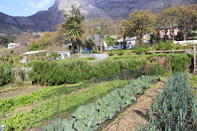Weeds are considered by organic farmers as ‘indicator plants’. Plants grow preferably where they find the food they need in an environment at which they are adapted.

‘Weeds’ can therefore indicate deficiencies or excesses of minerals in the soil as well as reveal information on the pH, moisture content and compaction of the soil such as the presence of hardpan - an impenetrable layer, typically of clay soil.
Frederick Clements, a famous U.S. botanist explained: "Each plant is an indicator as each plant is the product of the conditions under which it grows, and is thereby a measure of these conditions.
As a consequence, any response made by a plant gives a clue to the factors at work upon it." Good examples are quick grass (Cynodon dactylon) that prefers compacted soils and stinging nettle which grows on high-nitrogen soils. Clover will be found on soil that is low in nitrogen.
How to Control Weeds
Weed control is a big challenge in organic farming. The most effective way is the mechanical removal of weeds. This can be done by hand or through equipment pulled by tractors.
For example, weeds can be removed by a blowtorch hooked to the back of a tractor. It is used in organic vegetable farming, but is expensive and dangerous. Mulch can be used to control weeds, and also helps to keep soil moist, prevent frost damage and adds to the organic matter in the soil.
Mulch can be organic (e.g. straw, tilled-in cover crops, bark) or plastic sheeting can be used. Find out about regulations form the organic certification body if this will be allowed. Plastic needs to be removed at the end of the season and disposed of in an environmentally friendly manner.
Cover Crops to Reduce Weeds
Cover crops and intercropping (plants growing closely together or planted in between rows) may also reduce weeds. The soil is so densely planted with crops that there will be not space or enough light for weed seeds to sprout and grow.
Intercropping is also a way to ensure biodiversity of your farm. With the planting of cover crops, the main aim is to improve soil health and not to be harvested or to be used for grazing. Popular crops for improving soil health include legumes and clovers.
By Marinda Louw